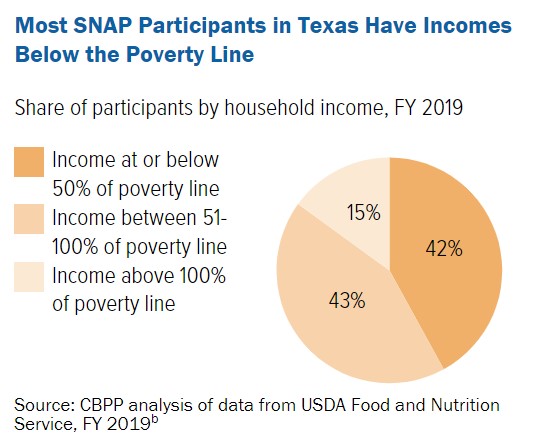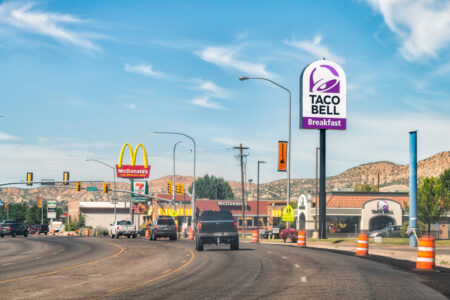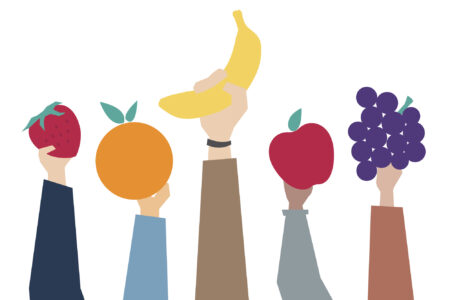
Share On Social!
The Supplemental Nutrition Assistance Program (SNAP) helps one in eight Americans put food on the table.
During the COVID-19 pandemic in 2020, millions of Americans lost their jobs and experienced reduced incomes – causing Congress to make temporary emergency changes to SNAP.
As a result, SNAP recipients experienced a boost in benefits, either receiving an additional $95 in benefits or an additional benefit valued up to the maximum benefit for their household size, whichever value was greater, according to the United States Department of Agriculture.
While these emergency allotments have ended in many states, the Lone Star State has continued providing eligible households with an increased food budget.
However, Texans may feel the pinch in the next few weeks, as Congress recently passed legislation to mark February 2023 as the last month for eligible households to receive the boost in SNAP benefits.
What could this mean for Latinos, who make up 40.2% of Texas’ population?
Food Banks Prepare for Increased Demand
Despite the boost to SNAP benefits for the last three years, inflation and the increased cost of living has left many families with no choice but to seek help from local food banks.
According to the US Bureau of Labor Statistics, grocery prices have increased 13.5% nationwide from August 2021 to August 2022, the largest 12-month percentage increase since 1979.
This rise in food prices means that SNAP benefits may not stretch as far as they used to.
One in nine people, or 12% of Texas’ population, depends on SNAP to put food on the table. Almost 79% of SNAP participants are in families with children, more than 27% are in families with older adults or care for someone with specific needs, and more than 51% are in working families, according to the Center on Budget and Policy Priorities.
In San Antonio, Texas, which has a 65.7% Latino population, the local food bank continues to serve near pandemic levels, about 105,000 people each week.
Prior to the pandemic, the food bank served just 60,000 each week, San Antonio food bank CEO Eric Cooper told KENS 5 News.
Now, with the end of increased SNAP benefits, the food bank is preparing for a “tidal wave” of need.
“They’re leaving the grocery store with less food in the cart than ever before,” Cooper told KENS 5 News. “These kinds of cuts – it’s not anything we can make up.”
Cooper noted that when SNAP benefits return to pre-pandemic levels, families will likely struggle even more to feed their families nutritious food, as affordability is the biggest challenge to eating healthy for SNAP recipients.
However, in 2021, President Biden “modernized” the Thrifty Food Plan – which is used to calculate SNAP benefits – and issued a 25% rise in the average SNAP benefit, the largest single increase in the program’s history.
These changes to the Thrifty Food Plan were made separate from the emergency boost in SNAP benefits. The plan could ease some of the detrimental effects of the SNAP boost ending on March 1, but participants may still be hampered by inflation and the rising cost of groceries.
Only time will tell if changes to the Thrifty Food Plan will truly make a difference for Latinos and others in need, amid the current inflated economy.
Latinos and Food Insecurity
Latino households suffer more from food insecurity than the national average, according to the USDA.
But inflation, the increase in cost of living, and benefit cuts to SNAP are only partially the problem when it comes to healthy food access for Latinos.
 For instance, many Latinos, especially in Texas’ Rio Grande Valley, live in food deserts, where the nearest grocery store is more than 2 miles or 15 minutes away. Many of these same Latinos also lack adequate transportation, meaning they must depend on others or public transportation to get to the nearest grocery store.
For instance, many Latinos, especially in Texas’ Rio Grande Valley, live in food deserts, where the nearest grocery store is more than 2 miles or 15 minutes away. Many of these same Latinos also lack adequate transportation, meaning they must depend on others or public transportation to get to the nearest grocery store.
Latinos are also more likely to live in food swamps, an area with scarce grocery stores but a high-density of restaurants that offer high-calorie fast food.
Additionally, Latinos tend to be targeted by advertisements for high-calorie, low-nutrient products, including candy, sugary drinks, and snacks – further contributing to their likelihood of choosing these products over healthier options.
Recent changes to free and reduced school lunches has also left the health of many Latino and all children in question.
Implications of Food Insecurity
Food insecurity is associated with obesity and a slew of other diseases, like heart disease and diabetes, as consumers with strict food budgets are often understandably attracted to cheaper, less healthy food.
Like a domino effect, unhealthy diets further contribute to Latino health differences, which is why social programs like SNAP are vital to the health of Latinos and other populations.
Get Involved in Improving Nutrition and Food Access
You can volunteer or donate food or funds to your local food bank.
You also can find out what food security and nutrition look like in your community using Salud America’s Health Report Card!
Select your county and see details regarding food and nutrition including:
- food access
- percentage of population with SNAP Benefits
- grocery store rate
Email your Health Report Card to community leaders, share it on social media, and use it to make a case to address food and nutrition insecurity where help is needed most!
Explore More:
Healthy FoodBy The Numbers
1
Supermarket
for every Latino neighborhood, compared to 3 for every non-Latino neighborhood



